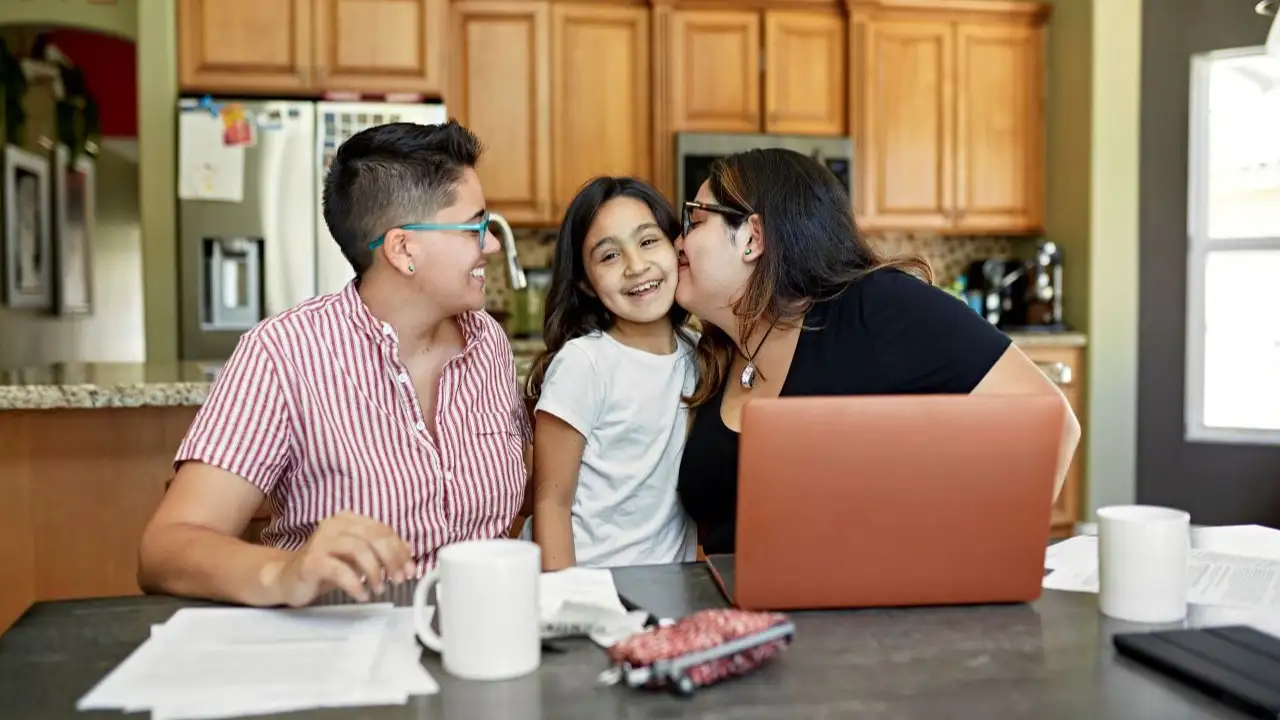
Money Tips & Education
Smart spending with envelope budgeting: a step-by-step guide
Feb 19, 2024
Written by
Reviewed by
Key takeaways:
Envelope budgeting is a simple way to track monthly expenses.
The envelope system works with cash or debit card spending.
A budgeting app can help you keep track of digital envelopes.
Making a budget can put you in control of where your money goes. But there's more than one way to do it.
Envelope budgeting is a simple, popular way to track expenses. It's designed for people who use cash for things like groceries, gas, or household spending, but you can also use it with debit cards.
Not familiar with the envelope budgeting system? We'll walk you through the basics so you can decide if it’s right for you.
What is envelope budgeting?
“Envelope budgeting,” or the “budget envelope system,” is a way to manage monthly expenses beyond your regular household bills. Back in the day, people used actual envelopes, though nowadays it works just as well in digital format. In a nutshell, you decide in advance how to spend all of the money that's left after paying fixed expenses like rent, mortgage, or utility bills.
Following a budget using the envelope method is meant to help you avoid overspending. Here's how.
You assign your discretionary expenses (things other than your regular bills) to budget categories.
You decide on a dollar amount for each spending category and put that amount into an envelope labeled for that category.
Once you’ve spent all the money in the envelope, you don’t spend any more in that category until the new budget period begins.
The goal is to spend only what's in your envelopes, and nothing more. If there's money left in a budget envelope at the end of the month, you can roll it over to the next budget period, pay down debt, or put it in savings instead. Envelope budgeting works best when you track variable expenses—those are things you spend money on every month, but the amount isn't always the same.
Examples of variable spending categories you might use with the budget envelope system include:
Groceries
Gas
Car maintenance
Dining out
Entertainment, including streaming services
Vacations
Gifts
Clothing
Hobbies
Personal care, including haircuts and toiletries
Household items, like cleaning supplies
You can also include a miscellaneous envelope for expenses that don't fit into a specific budgeting category. That's the beauty of envelope budgeting—you can adapt it to fit your spending habits.
Getting started with envelope budgeting—step-by-step guide
Putting the envelope budget system to work isn't difficult, even if you’ve never followed a budget before. Here's how to budget using the envelope system.
Add up all the income you have for the month, including your paychecks and any money from side hustles or gig work. You can also include other sources of income, such as alimony or government benefits.
Make a list of the variable expenses you'd like to create budget categories for.
Decide how much you want to spend in each category.
Set up an envelope for each expense category. If you're using cash, use physical envelopes. If you spend with debit cards, use a budgeting app to set up categories and track spending.
Add the assigned amount of money to each envelope.
Tracking the cash in the envelopes is easy. Use the cash every time you spend in that category. Once it’s gone, it’s gone. If you’re tracking debit card spending, keep daily tabs on your spending. (Spreadsheets are great for this.)
The goal is to keep track of what you spend and stick to your budget, so you don’t run out of money before the end of the month. Ideally, you lower your spending limits in each category so that you end up with money left over that you can use to pay down debt or save toward a goal.
You can adapt the budgeting envelope system to fit how often you get paid. For example, if you get paid once a month, you might fill your envelopes at the start of the month, after you've paid your other bills. If you get biweekly paychecks, you might fill your envelopes every other week (just split the amount you budgeted for the month in half for each category).
Pro tip: Getting paid biweekly means you'll have a third paycheck a couple of months out of the year. Instead of adding that money to your budget, you could use it to grow your emergency fund or make an extra payment to debt.
Benefits of envelope budgeting
One reason the envelope budget system is so popular in personal finance circles is that it works. If you take the time to figure out what you can realistically afford to spend each month and stick to that amount, the budget envelope method can keep you from overspending.
You might consider using this budget plan if you:
Want to give every dollar of your income a job.
Hope to get a better handle on your variable or discretionary spending.
Primarily use cash or debit cards.
Envelope budgeting could also help you build a savings habit—just earmark one of your envelopes for saving (or just put your budgeted amount straight into a savings account).
Beyond those benefits, the envelope budget system is simple—something you might appreciate if you've found other budgeting methods too complicated. As long as you track your spending, you'll always know exactly how much is in your envelopes.
Drawbacks of envelope budgeting
Is envelope budgeting right for everyone? No. Not necessarily. These drawbacks might mean you want to check out other budgeting methods, like the 50/30/20 rule:
You might not feel comfortable keeping envelopes of cash around.
Withdrawing cash and separating it into envelopes can be time-consuming.
Tracking spending can get more complicated if you use multiple debit cards or credit cards.
Going digital with your budget system can eliminate the need to carry cash and sort it into envelopes. You just need to figure out how to keep up with expenses so you don’t go over-budget. That might be as simple as using a budgeting app to categorize expenses, or tracking them with a spreadsheet.
Tips for successful envelope budgeting
Learning how to budget is fun and rewarding (especially when you make measurable progress toward your financial goals). If you're ready to try using the envelope method to budget, we've got a few tips to help you make the most of it.
Review three to six months of spending history to get an idea of where your money goes. That can help you decide which budget categories to include.
Decide if you want to use cash or go digital. Use a free budgeting app to track your spending if you try digital envelopes.
If you use cash to fund your envelopes, stick with fee-free ATMs for withdrawals.
Review your past month's spending amounts when setting your budget for a new month.
Have a plan for leftover funds. That might mean using it to pay down debt, adding it to a high-yield savings account, rolling it over to the next month, or something else.
Budgeting doesn't have to be hard, and the envelope system could be just what you need to get a grip on your finances. Taking it for a test run is a good way to figure out what you like or don't like about budgeting using envelopes.
What's next
Review your most recent budget to get a sense of where your money goes each month.
If you don't have one yet, open a savings account to hold any leftover funds from your envelopes.
Download a free budgeting app if you plan to keep track of spending with a digital envelope system.
Author Information
Written by
Rebecca is a senior contributing writer and debt expert. She's a Certified Educator in Personal Finance and a banking expert for Forbes Advisor. In addition to writing for online publications, Rebecca owns a personal finance website dedicated to teaching women how to take control of their money.
Reviewed by
James is a financial editor for Achieve. He has been an editor for The Ascent (The Motley Fool) and was the arts editor at The Valley Advocate newspaper in Western Massachusetts for many years. He holds an MFA from the University of Massachusetts Amherst and an MA from Hollins University. His book Krakatoa Picnic came out in 2017.
Frequently asked questions
Can I use envelope budgeting if I have irregular income?
Yes. To budget with irregular income, start with the minimum amount of money you can count on each month. You can assign money to each budget category envelope based on that amount. You can add more during the months when your income is higher than the minimum.
Is it safe to keep cash at home for envelope budgeting?
Keeping cash at home for envelope budgeting (or any other reason) has some risks. For instance, the money could be lost if you experience a fire or other disaster that damages your home. Protecting your cash in a safe can help you feel more comfortable with keeping it around the house.
How do I handle unexpected expenses with envelope budgeting?
The best way to handle surprise expenses is to have an emergency fund. That’s one of the goals you can work toward with your envelope budget. Add an envelope marked "savings" to your budget plan. A financial safety net will help you avoid dipping into your other envelopes or taking on new debt to cover unexpected expenses.
Related Articles
Some credit checks affect your score, but others don’t, even from the same lender. We’ll explain when and why credit checks can affect your credit.
Jane Meggitt
Author
Myth-busting: you don’t need to carry a credit card balance to have good credit! Learn how credit utilization affects credit scores.
Rebecca Lake
Author
Ready to take control of your money? Learn what a budget can do for you and how to make one.
Rebecca Lake
Author
Some credit checks affect your score, but others don’t, even from the same lender. We’ll explain when and why credit checks can affect your credit.
Jane Meggitt
Author
Myth-busting: you don’t need to carry a credit card balance to have good credit! Learn how credit utilization affects credit scores.
Rebecca Lake
Author
Ready to take control of your money? Learn what a budget can do for you and how to make one.
Rebecca Lake
Author


